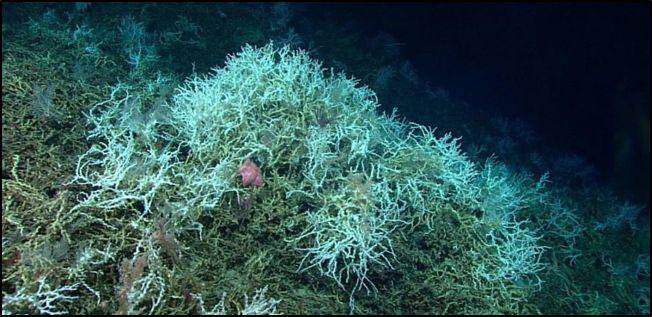CESD PhD student Patrick Saldaña from the Altieri Lab has a new blog post at Biodiversity Blog. Check it out and learn how dead corals can host higher biodiversity than live coral habitats.
Excerpt:
Scattered throughout the world and deep in the sea, at depths ranging from a few hundred to over six thousand feet, there are coral reefs inaccessible to most divers. The water is cold down there, sometimes even below freezing temperatures. Because of the extreme depth and environmental conditions in which these corals live, we know much less about them than their more popular tropical cousins. Known as cold-water corals (CWC), these animals do not host photosynthetic zooxanthellae and instead derive their food entirely from filtering small particles swept towards them by ocean currents. This strategy allows them to inhabit such deep depths devoid of light. However, just like tropical corals, CWCs are habitat-forming species and provide structural havens for biodiversity in an otherwise dark, desolate and structureless space.
